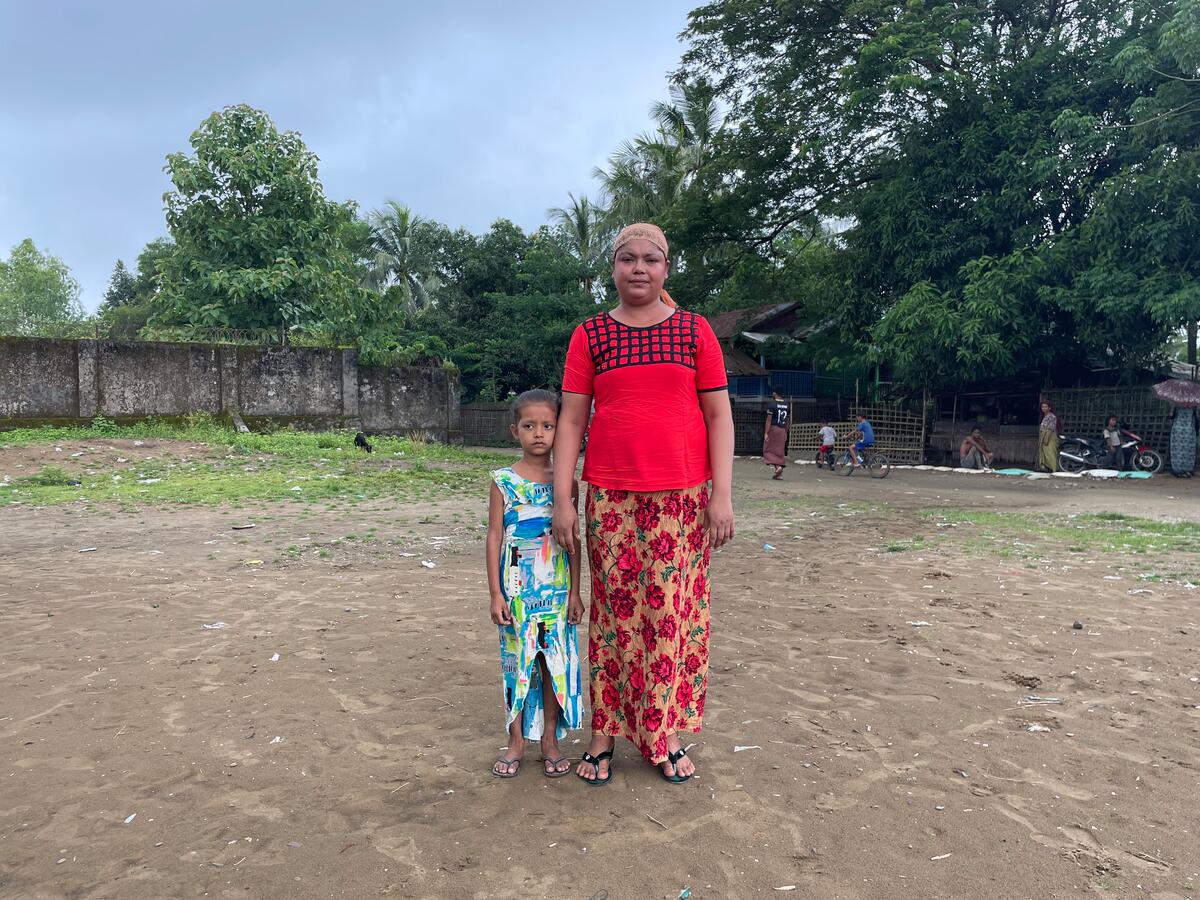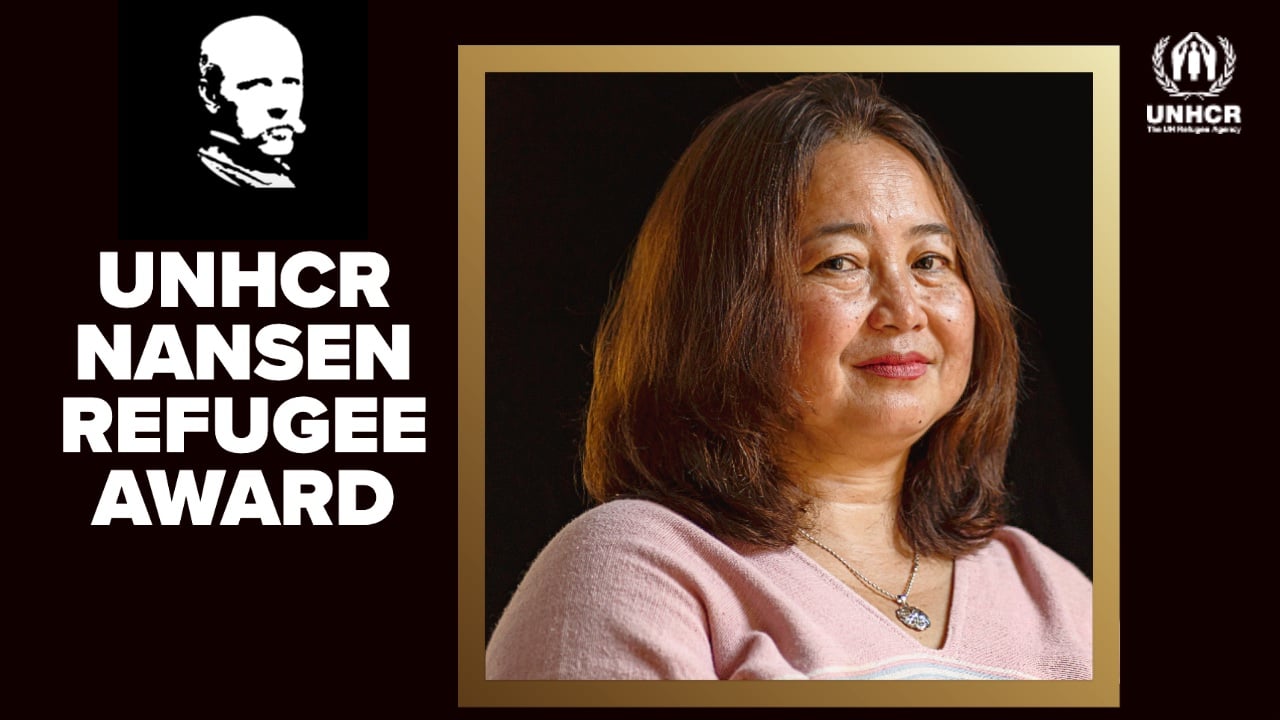Colombia's indigenous pushed to find safety in cities
Colombia's indigenous pushed to find safety in cities

MEDELLIN, Colombia, October 18 (UNHCR) - Forced to flee from her home in the forests of north-western Colombia when she was 21 years old, Hilda has spent the last few years starting a new life in the country's urban jungles while trying to retain her distinct cultural and ethnic identity.
She also campaigns against the discrimination and stigmatization suffered by indigenous people, particularly women, in cities and towns. A member of Colombia's Embera tribe, the 36-year-old teacher is one of tens of thousands of indigenous people in Colombia who have been forced to flee their homes because of violence or persecution during the country's long internal conflict.
Although the UN High Commissioner for Refugees António Guterres has welcomed the launch of peace talks this week in Norway between the government and left-wing guerrillas, indigenous people suffer every day in Colombia.
Since 1997, more than 105,000 indigenous people have been displaced, including some 4,080 last year alone. More than 30 tribes are threatened with extinction in a country where indigenous groups together make up around 3 per cent of the population and have a rich cultural heritage.
Hilda was brought up in the traditional ways of her people, including living off the land in the forests of Urabá Antioqueño, a sub-region of Colombia's Antioquia department. But during the 1990s, the presence of illegal armed groups in the region increased due to competition over its rich natural resources and for control of drug smuggling routes and coca cultivation.
The indigenous people were squeezed in the middle. Many were killed, but more - like Hilda - fled for safety, leaving behind their unique way of life and the freedom of their territories. They headed for the slums of the towns and cities, where they live in poor conditions, struggle to compete for jobs and are discriminated against.
Hilda fled in 1997 with several friends to the municipality of Mutata after constant threats, and on the advice of her peers. The young Embera woman worked for several years as a teacher in Mutata, but one day she received a letter from one of the armed groups asking her for a meeting at the school. She decided to run.
"I was a threat to them because I knew exactly which armed groups were in the area and who was persecuting the community," Hilda explained. What's more, she was the only person in her community who could speak Spanish, the language of the government.
This time she found refuge first in Bello and then in neighbouring Medellin, capital of Antiquoia and Colombia's second largest city. She tried to return home after three months, but realized it was simply too dangerous, with armed groups manning checkpoints on the roads.
More internally displaced people (IDP) seek shelter in Medellin than in any other municipality aside from Bogota, the national capital. Last year, according to the National Registry System, more than 230,000 IDPs arrived in Medellin between 1997 and December last year. This included almost 30,000 in 2011.
A majority of the IDPs, around 80 per cent, are from agricultural areas and most of them just disappear into the urban jungle, where they face a multitude of challenges without sufficient support. The indigenous people, about 0.5 per cent of the IDP population in Medellin, also face the loss of their identity and culture.
But Hilda has decided to speak out for her people, particularly the displaced indigenous women. As a teacher and a community leader, and by example, she wants to help other indigenous women to counter racial discrimination and to help them preserve their culture. "I am from the forests of the Urabá Antioqueño, and I am here in the city of Medellin to make my dreams come true," as she put it.
With UNHCR's help, she has been holding regular dialogues in Medellin through the Chibcariwak Council, an organization gathering indigenous people in Medellin. At these meetings, Hilda and other indigenous women discuss the risks and challenges they face in an urban context and look for solutions.
Aside from issues of discrimination and stigmatization, Hilda said that forcible displacement also threatened the culture and traditions of indigenous people. She added that the children were being brought up in an alien culture and losing touch with their roots, especially in big cities like Medellin.
"When we lose our territory, we are also at risk of losing our identity," stressed Hilda. In response, she and her women friends also regularly research and practise their tribal traditions, including singing, music, art and making traditional jewellery.
Hilda likes making jewellery most. It's a craft that, she says, "revitalizes us and helps give us mental and physical strength and also to make some money." She is clearly a woman with her heart in the past and her head in the present - and that's a good place to be to build a brighter future while she waits to one day return home.
By Diana Díaz Rodríguez and Lívia Mota in Medellin, Colombia








